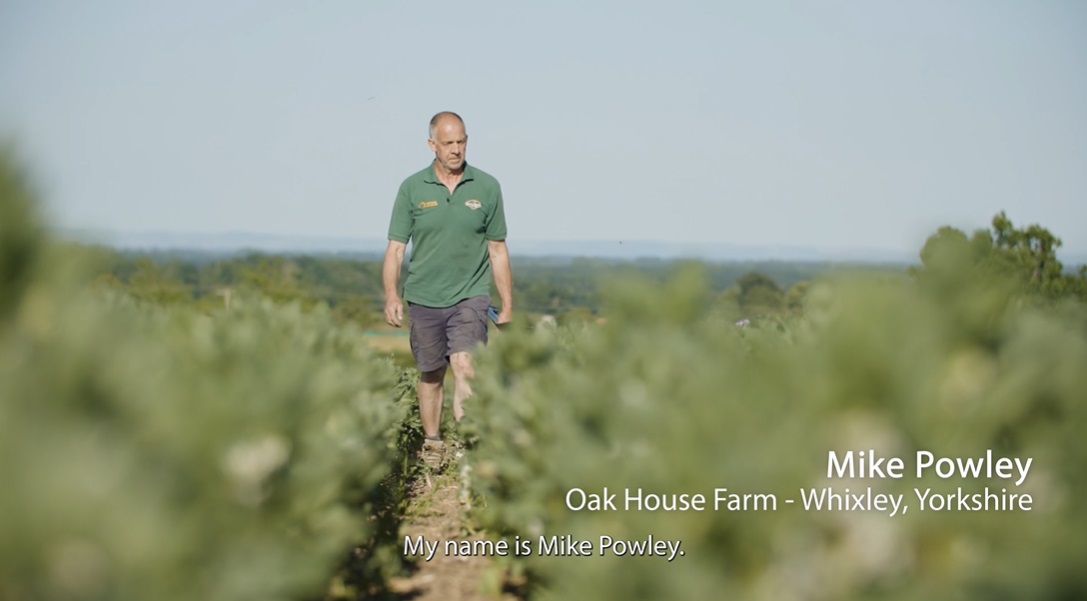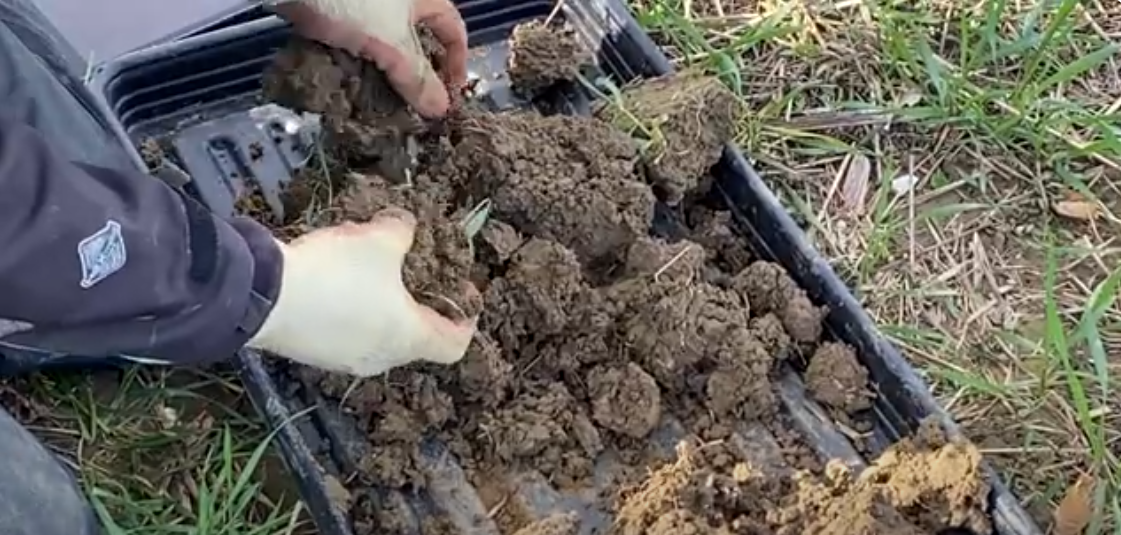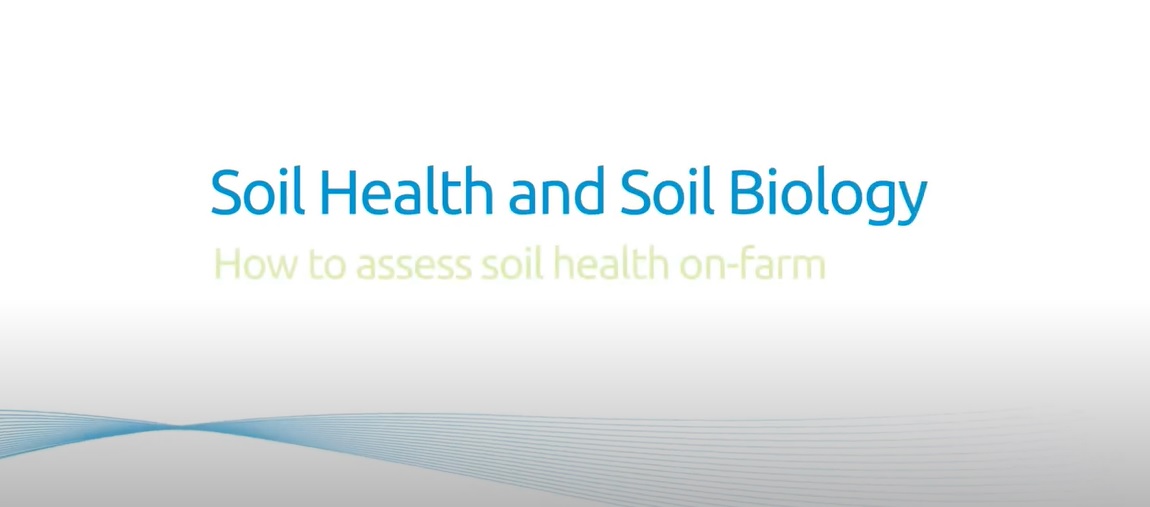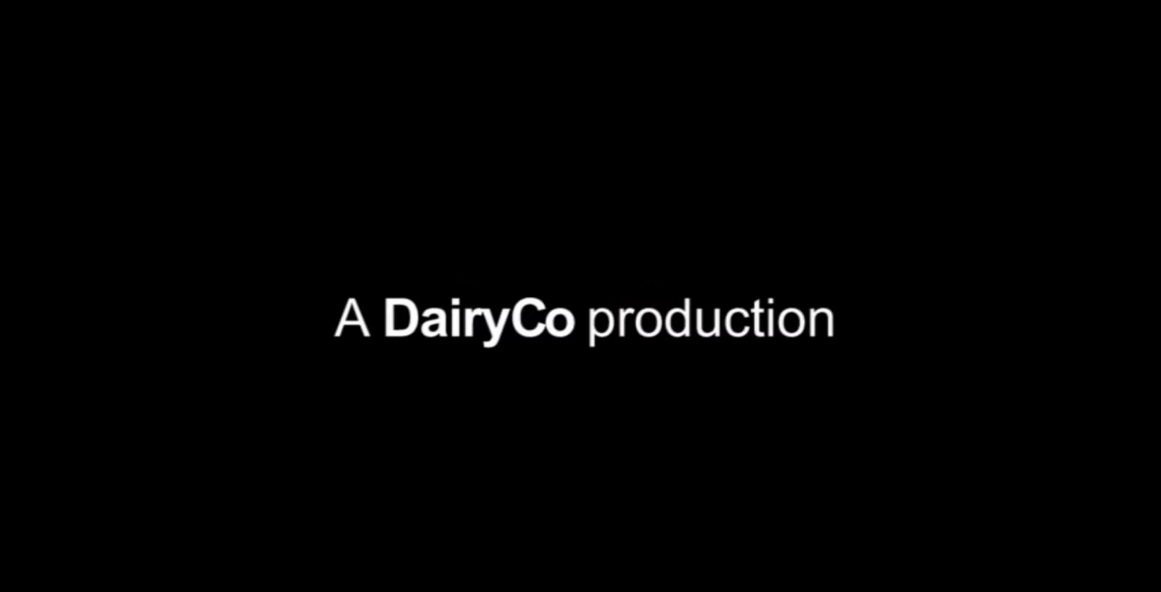Soil health
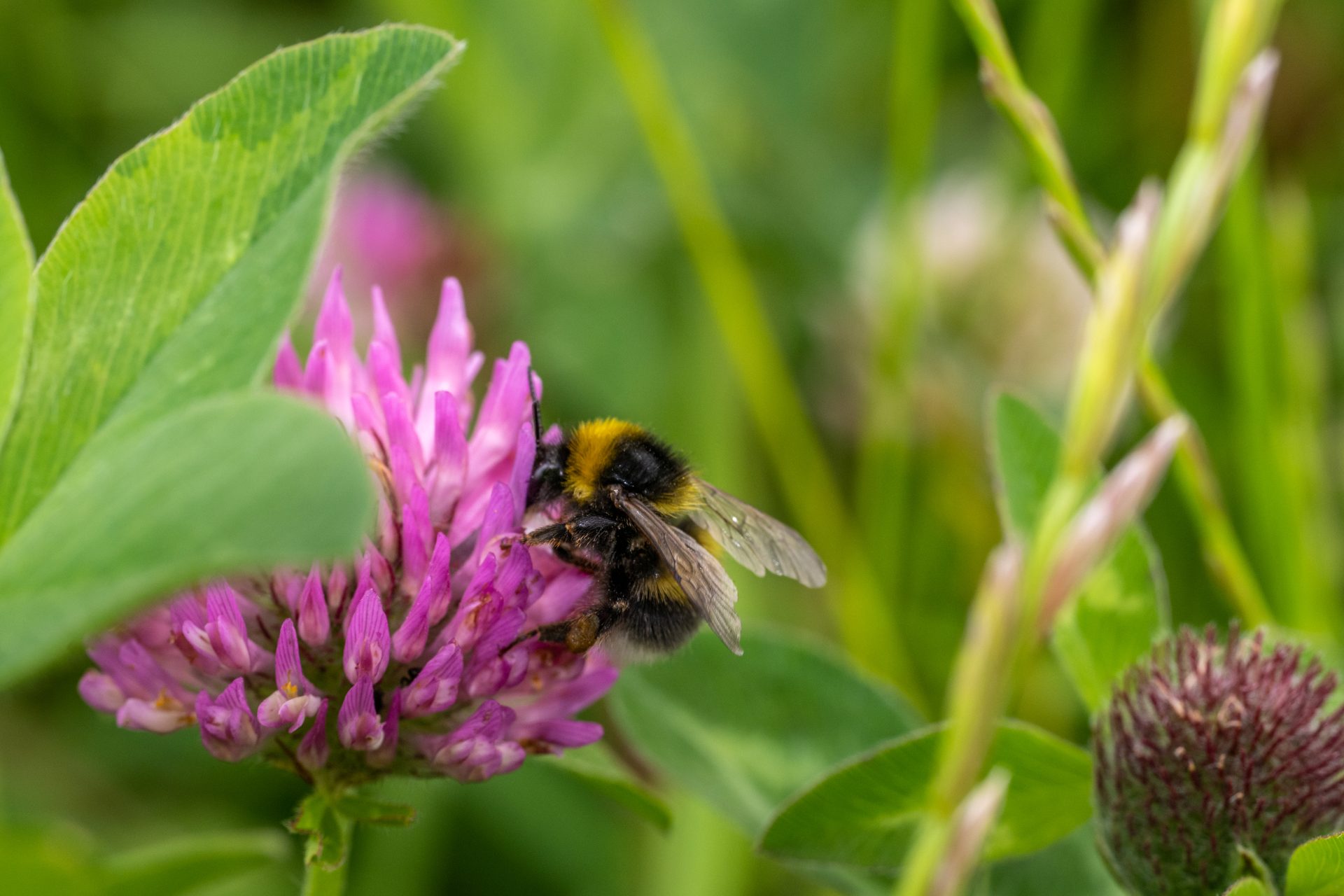
Soil structure types can be described in many ways (Figure 1). However they can be grouped into three main groups: 1) those that are formed biotically by the soil biology and organic matter often seen around the roots of cover crops; 2) those that are formed abiotically, for example through the action of tillage or cracking in a dry summer; and 3) those that are formed by compaction, often seen by horizontal platy structures in the soil profile.
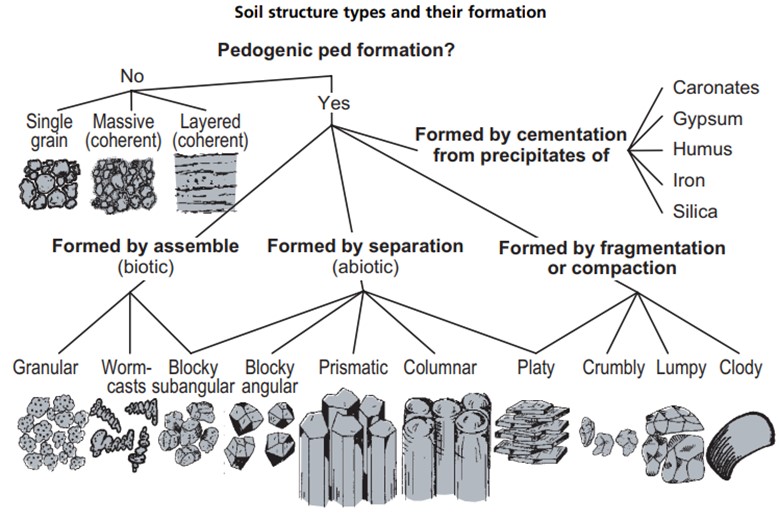
Soil structure needs to be resilient in an agricultural production system throughout the cropping period and beyond. Only too often soil structure “looks” good immediately behind a tillage operation, only to deteriorate once heavy rains appear and that same structure starts to collapse due to overworking of the soil, which can eventually end up as a “sloppy mess”.
Figure 2 shows large differences in soil structure in adjacent plots that have been managed in different ways, including with cover cropping.

One of the core principles of regenerative agriculture is to keep a living root in the ground at all times. Cover Crops fulfil this role between harvest and establishment of a spring crop. The Cover Crop has many benefits to soil health, including maintaining aggregation of soil particles, feeding the soil flora and fauna and aiding drainage by putting down roots.
The structure of soil is hugely complex, fragile, and variable over many different soil texture types, horizons, geographic locations, and climates. It comprises the physical habitat of soil living organisms, and controls many important physical, chemical, and biological soil functions and associated ecosystem services.
It is a key component of the quality and health of agricultural soils worldwide and different agricultural practices play a significant part in its sustainability and resilience, with cover crops being particularly beneficial.
Typically soil structure can, for example, be damaged by compaction and over disturbance (Tillage) or improved by planting cover crops and eliminating or reducing soil disturbance (Figure 3, below).
Fundamentally good healthy soil structure can be thought of the degree to which the pedogenic process called aggregation, which forms because of the rearrangement, flocculation and cementation of soil particles, occurs which is facilitated by a plethora of soil biological and organic matter activity.

Soil Function
- Carbon capture
Healthy soils are also able to capture and retain more carbon, both through accumulation of soil organic matter and increased levels of soil biology. Early indicators that assess soil biological activity, like respiration and microbial tests, can often demonstrate this potential earlier than some soil carbon benchmarking.
- Alleviating compaction
Deeply penetrating roots of some cover crop species can act as a ‘tillage tool’, creating channels that can be used by the roots of succeeding crops, alleviating soil compaction and improving soil structure. However, the rooting action of cover crops shouldn’t be expected to get rid of compaction pans. Rather, these should be removed with targeted sub-soiling and followed by cover crops to keep compaction at bay and retain the structure created by the cultivation.
(Image: Yorkshire Agricultural Society)

- Understanding infiltration rates
Water infiltration rates provide information on soil structure. Managing soil health, maintaining good soil structure, is an essential part of any strategy to improve resilience to changing rainfall intensity. Improving the ability of the soil to absorb water during intense rainfall events (infiltration) helps reduce the risk of soil erosion and the associated loss of nutrients from land to water. Cover crops can add organic matter to soils, which can lead to improvements in the soil’s physical condition, stabilising soil aggregates, helping to reduce compaction, and stimulating microbial activity. These improvements in soil structure help to retain more water within the soil rooting zone for use by crops, and reduces the risk of subsurface flow and leaching.
- Preventing Erosion and Run-Off
Cover crops are grown primarily for the purpose of ‘protecting or improving’ between periods of regular crop production and can contribute to reducing the risk of surface run-off and diffuse pollution by providing soil cover. However, the potential of the cover crop to do this can be dependent on the seed mixture used, with species with both a high root density (influencing soil aggregate stability, such as oats), and high root thickness (influencing drainage pores, such as radish and chicory), potentially performing especially well to make soil more resistant to runoff and erosion. Species that establish rapidly and provide good levels of dense green cover (such as mustards) are also likely to perform well in reducing the direct erosive force of raindrops on the soil surface (interception).
Carbon capture
The use of cover crops in a direct drilling system can reduce a farm’s carbon footprint by improving the soils biology and structure. Plants typically pull in CO2 from the atmosphere during photosynthesis and store it as biomass. As biomass increases, farmers will also observe a rise in worm numbers. This in turn increase infiltration rates in the soils along with more roots. The root exudates contribute organic carbon to the soil and aggregation. Earlier drilling can show increased biomass in some trailed species including black oats, phacelia, and clover.
(Image: Shutterstock)

Animal feed
Cover crops can also be grown for short-term grazing fodder for sheep or cattle. For grazing, consideration must be given to selecting the relevant species that are suitable for animal feed. Grasses and cereals (e.g., oats, rye and rye-grass) can all be grazed and deliver good early ground cover (which is important where erosion is a concern), as well as other benefits, including vigorous rooting. Autumn-sown brassicas (e.g., mustards, radishes, and turnips) and legumes (e.g., sainfoin, vetch and clovers) which fix nitrogen can also be grazed, with care.
The former often provide good ground cover and deep rooting, with the latter benefitting following crops through raised fertility. Chicory is a deep-rooted herb (delivering soil structure benefits) and is better suited to longer-term use, especially where grazing is of interest.
(Image: A Gowthorpe, Approach Farm)

In some cases, grazing cover crops has been shown to improve the cycling of their nutrients, making some nutrients more available to the following crop and leading to an improvement in crop yield. However, there are some agronomic issues that could occur from grazing over winter cover crops, such as creating issues with soil compaction and leaching of N deposited in urine in adverse weather conditions.
Nevertheless, such risks may be mitigated against by having a ‘back-up’ field nearby, ready to move the livestock into if ground conditions worsen. If livestock are not already present on the farm, then you can consider working with graziers or neighbouring farmers who could supply the stock, infrastructure, and expertise.
Forming a good relationship with the grazier is key to ensuring both parties benefit from the arrangement. This way you can also communicate easily and honestly about the removal date, bad weather strategy, the residual crop target, and the species mixture.
Please refer to the selection section of the website for information on grazing friendly species.
We have reviewed the most commonly used resources for grazing and animal feed available online and would recommend the following for accessing further information:
Nutrient capture
Over winter cover crops are commonly used to take up and hold nutrients, including nitrogen (N), on what would otherwise be bare or stubbled ground and help prevent over winter leaching. The amount of N taken up by over winter cover crops is affected by species and biomass achieved. Uptake of N by cover crops sown in late summer/autumn ranges from 30 to 120 kg N/ha before spring.
After growth and incorporation of the cover crop over autumn and winter, the N either fixed or captured by the cover crop must be broken down to become to plant available forms for the following cash crop. How soon nitrogen becomes available to following crops, due to the process of mineralisation, will depend on many factors.
It is possible that the method and timing of cover crop destruction can affect nitrogen release, further research is required to understand this better.
(Image: Shutterstock)

The Nitrogen Release from Cover Crops (NiCC’s) collaborative project with ADAS, Affinity Water, and Portsmouth Water has been looking to investigate further the legacy effect for subsequent crops in the rotation, of relevance is the timing of nitrogen release from cover crop residues and how this influences nitrogen fertiliser requirement of the following cash crop and subsequent nitrate leaching losses.
Results from the two trial sites indicated where a cover crop mixture was in place there was a significant reduction in nitrate leaching as opposed to stubble over winter. Additionally, spring soil nitrogen supply was up to 30kg/ha greater where a particular cover crop mixture had been grown.
Further work was required to establish the fate of this nitrogen following the destruction of the cover crop, and whether this translated into a reduction in the requirement of fertiliser for the following crop, whilst minimising long-term nitrate leaching.
Biodiversity
Above ground
Many cover crop species are able to provide an autumn / winter flowering resource, which is important for many insects that feed on either nectar or pollen. Other insects, and larger animals such as birds and mammals, will also benefit from the non-floral food, habitat, shelter, and protection that cover crops provide, particularly during the winter months when these resources can be harder for these organisms to find elsewhere.
Such biodiversity increases from cover cropping can also benefit crop yield, as the more diverse vegetation can increase the abundance of natural enemies of crop pests. Care must be taken, however, to ensure that cover crops do not provide ‘green bridges’ for pests and diseases of the following crop, which can be a particular risk when the cover and main crop species are closely related. Peach-potato aphid, for example, can host on a great many plant species, and particularly on any cereals in the cover crop. Early termination may be beneficial to aphid control and should be considered where the following crop may be at risk.
(Image: Yorkshire Agricultural Society / Simon Hill Photography)

Below ground
Many of the organisms that make up the soil food web, from micro to macro fauna, carry out vital below-ground functions, including decomposition of SOM and transformation of nutrients into plant available forms. Cover crops may provide a bridge for organisms such as mycorrhizal fungi, providing living plant roots and sugary exudates that serve as their habitat and food, and can support wider soil microbial communities and increase overall microbial biomass. Macro soil fauna, particularly earthworms, mix soils and form channels that assist with water infiltration and crop rooting. There is some evidence to indicate that cover crops can also increase populations of these species, especially earthworms, though these effects may also depend on other factors (e.g. the farms approaches to tillage operations).
Some ‘biofumigant’ cover crop species can even be used to target below ground pests and diseases, typically using the chemicals released by the cover crop post-termination. Certain brassicas have been extensively researched to this end to control nematodes such as potato cyst nematodes (PCN), though careful consideration needs to be given to termination times and residue incorporation for optimum performance.
A good number of earthworms (i.e., >8/pit = ‘active’ population for arable soils) are beneficial for soil function. You want a balanced community structure of earthworm species and ages, otherwise some earthworm-mediated soil functions could be compromised.
Nematode reduction
Potato root nematodes or potato cyst nematodes (PCN) are 1-mm long roundworms which comprises around 12 species that live on the roots of plants such as potatoes and tomatoes.
Significant damage can be caused by these pests to causing yield reduction of up to 60% at high population densities.
By incorporating cover crops into a rotation, this approach can give good non-chemical control to PCN’s. This additional information will be added to the selection tool in due course.
You can find out more about PCNs here and crop management here.
(Image: Shutterstock)

Weed suppression
- Rapid growth
The rapid and vigorous growth of some cover crop species can help to suppress weeds.
- Allelopathic effects
Allelopathy is when an organism produces one or more biochemicals that control the germination, growth, survival, and reproduction of other organisms.
It is considered as an effective, economical and environment friendly weed management approach. The release of allelopathic compounds from leaves, flowers, seeds, stems and roots of living and decomposing plant materials can influence weed density and growth.
Certain species are also known to produce root exudates that have allelopathic effects which further enhance their weed management potential, though care must be taken to ensure that such effects do not impact the following main.
Role of Allelopathy in Weed Management: A Review (arccjournals.com) (2020)
(Image: Kings Crops/Frontier)
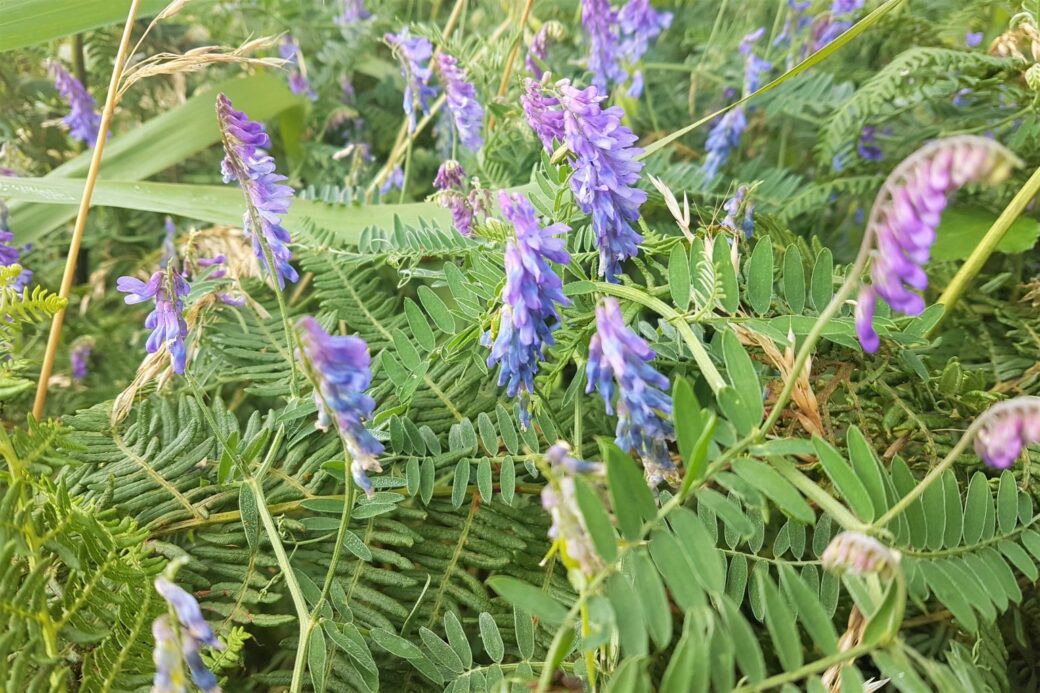
Requirement for Stewardship Scheme and Sustainable Farming Incentive (Defra)
Ensure that you have the right mixture of species families in the cover crop – a cereal, a legume, and a brassica. Please see the Defra website for latest updates and refer to your Stewardship agreement for details.
(Image: Shutterstock)

Name: Angus Gowthorpe
Farm location: 7 miles south of York, North Yorkshire
About the farm:
400 acre lowland mixed beef and arable farm, arable crops are all combinable, most of the forage is herbal leys including temporary leys within the arable rotation.
Started farming regeneratively, including growing cover crops, in 2014. The soil comes first in all decision making on farm. My experience with cover crops over the past 9 years has seen me growing increasing areas and increasing plant diversity within these crops.

My tips for cover cropping:
• Establish the cc as soon as possible after the previous crop has been harvested
• Treat as a crop, excluding nitrogen
• Ensure the correct mix of species is selected for to achieve the desired outcome from the cover crop (e.g. Nitrogen, Carbon, loosening, pollination, grazing feed value)
• Ensure the cover crop is terminated in sufficient time so as to avoid a negative yield impact on the following crop.

